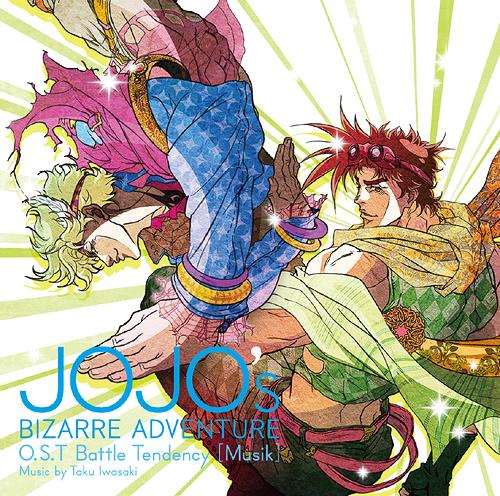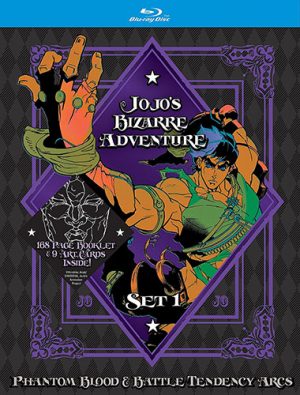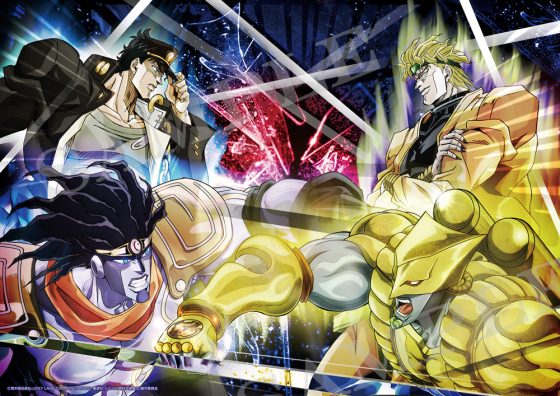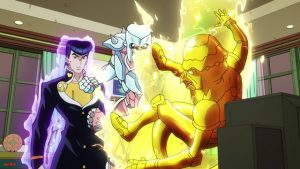
Compared to other long-running shounen series like Naruto or One Piece, JoJo’s Bizarre Adventure is... unusual. Its signature over-the-top style and decades-long publication history set it apart from other Shonen Jump franchises, but what really makes Hirohiko Araki’s opus unique is its structure. Instead of following one hero on a seemingly never-ending journey, JoJo’s Bizarre Adventure is split into eight parts of varying genre and length that each focus on a new member of the Joestar family.
Naturally, this means that different parts appeal to different people. And if you’re a new viewer, you may be wondering if you can skip to the part that most captures your interest instead of wading through dozens of mostly unrelated episodes to get there. Well, we’re here for you. Every part is worth watching and you’ll always miss out on a few references or character moments if you skip ahead, but we understand that your time is limited. So here’s a guide to choose your own path through JoJo’s Bizarre Adventure!
Part 1: Phantom Blood

- Episodes: 9
- Air Date: October 2012 – December 2012
- Prerequisites: none
The very first part of the JoJo series was originally written in 1987, and if you know your manga history, it’s pretty easy to tell. Phantom Blood is set in Victorian England and tells the tale of the noble Jonathan Joestar and his adoptive brother Dio Brando, who strives to one-up him in every way. Everyone is muscle-bound to a ridiculous degree (a la Fist of the North Star) and the plot follows a melodramatic good-versus-evil struggle with added elements of vampires, zombies, and magical sunshine kung-fu powers called Hamon.
Part 1 doesn’t have the intricately written Stand battles or the wacky hijinks of later parts, but the love-hate relationship between Jonathan and Dio is captivating and sets up the source of conflict for almost every part afterward. Plus, it’s still got all of the crazy poses and memeable moments you’d want!
Verdict: Watch Phantom Blood if you’re looking for the full JoJo experience. It’s old-fashioned in a sense, but the melodramatic tone works and it’s a great introduction to the series.
Part 2: Battle Tendency
- Episodes: 17
- Air Date: December 2012 – April 2013
- Prerequisites: Phantom Blood (necessary)
Jumping forward from Victorian England to 1930s New York, we meet our new protagonist—Jonathan’s grandson, Joseph Joestar. He’s just as intelligent and good-hearted as his gentlemanly ancestor, but Joseph has a silly streak a mile long. He uses sleight of hand and dirty tricks (like cross-dressing and playing dead) to outwit his opponents, who just so happen to be ancient Aztec vampire warriors this time around. He teams up with a Hamon master named Lisa Lisa and her tsundere student Caesar to defeat these unstoppable gods before they can take over the world.
Although relatively short and still lacking in the franchise’s signature Stand fights, Battle Tendency is tightly written and an absolute joy to watch. You could conceivably skip Phantom Blood to get here, but not knowing about Hamon, the Joestar and Zeppeli bloodlines, and the Stone Mask would really hurt your viewing experience. The anime consolidates both parts into one season, so watch them as a pair and have fun!
Verdict: Battle Tendency’s standout characteristics are its irresistibly likeable main character and well-crafted story. It can suddenly jump from comedy to drama, just like Joseph himself.
Part 3: Stardust Crusaders
- Episodes: 48
- Air Date: April 2014 – June 2015
- Prerequisites: Phantom Blood (necessary), Battle Tendency (recommended)
When your average Western nerd thinks of JoJo’s Bizarre Adventure, Stardust Crusaders is what they’re picturing. It’s the most famous part in the franchise (we’ll explain why in the next article), featuring the introduction of Stands and everyone’s favorite badass delinquent, Jotaro Kujo.
Dio Brando has returned after 100 years (he’s a vampire and body-snatched Jonathan, so that’s why he’s alive in the 1980s... it’s complicated) and passed down the power of Stands to the Joestar family. A Stand is a manifestation of someone’s soul and can come in any number of forms, although the most iconic is a ghost-like guardian who fights on behalf of its user. Jotaro’s mother’s Stand is slowly killing her, so the half-Japanese high schooler sets off to Egypt to eradicate Dio for good. He’s joined by his grandfather Joseph and a Scooby Gang of other Stand users with colorful personalities and powers.
Stardust Crusaders is the most conventional part in terms of story structure, but it’s so stylish and bombastic that it feels fresh even today. We think it’s best to at least watch Phantom Blood before this part so you have context for Dio’s rivalry with the Joestars, but if you’re just here for the crazy fights and memes, we don’t blame you.
Verdict: Stardust Crusaders is famous for a reason—it pioneered a unique power system and showed it off with larger-than-life characters who are still iconic to this day. You owe it to yourself to check this one out.
Final Thoughts

Join us next time as we take a look at parts 4 and 5, as well as a bit of history on the manga and Hirohiko Araki’s process. Did you enjoy our overview? What are your opinions on JoJo watch order? Let us know in the comments, and thanks so much for reading!


